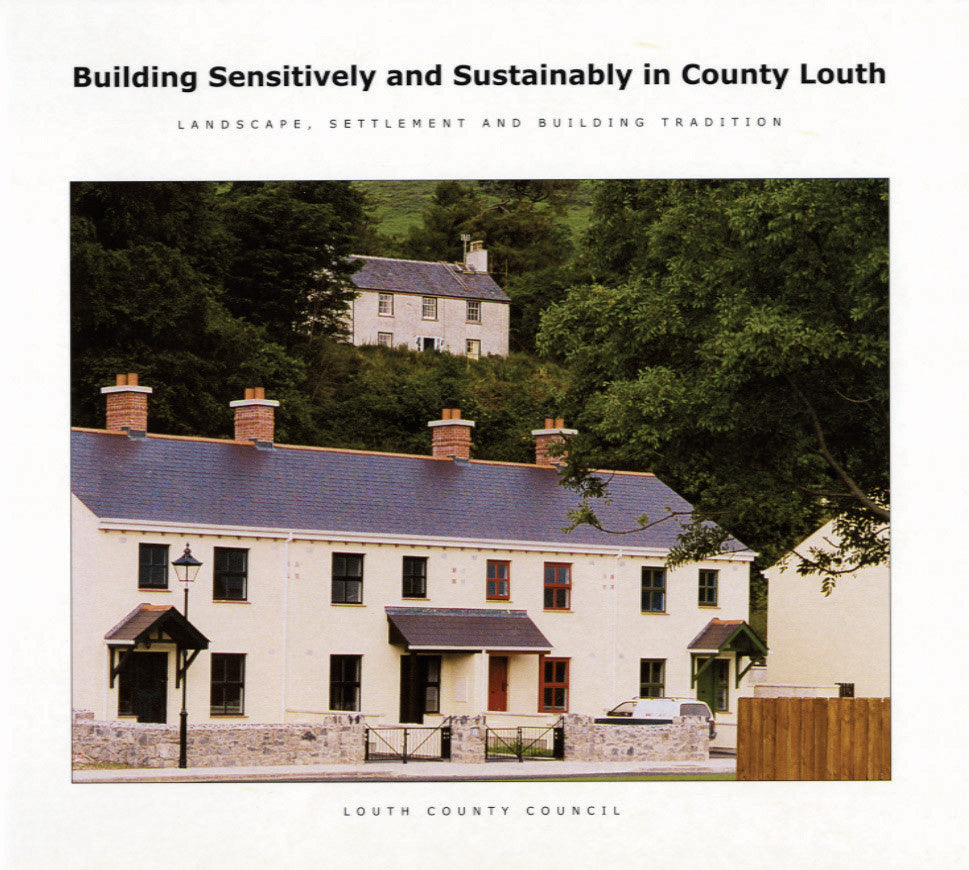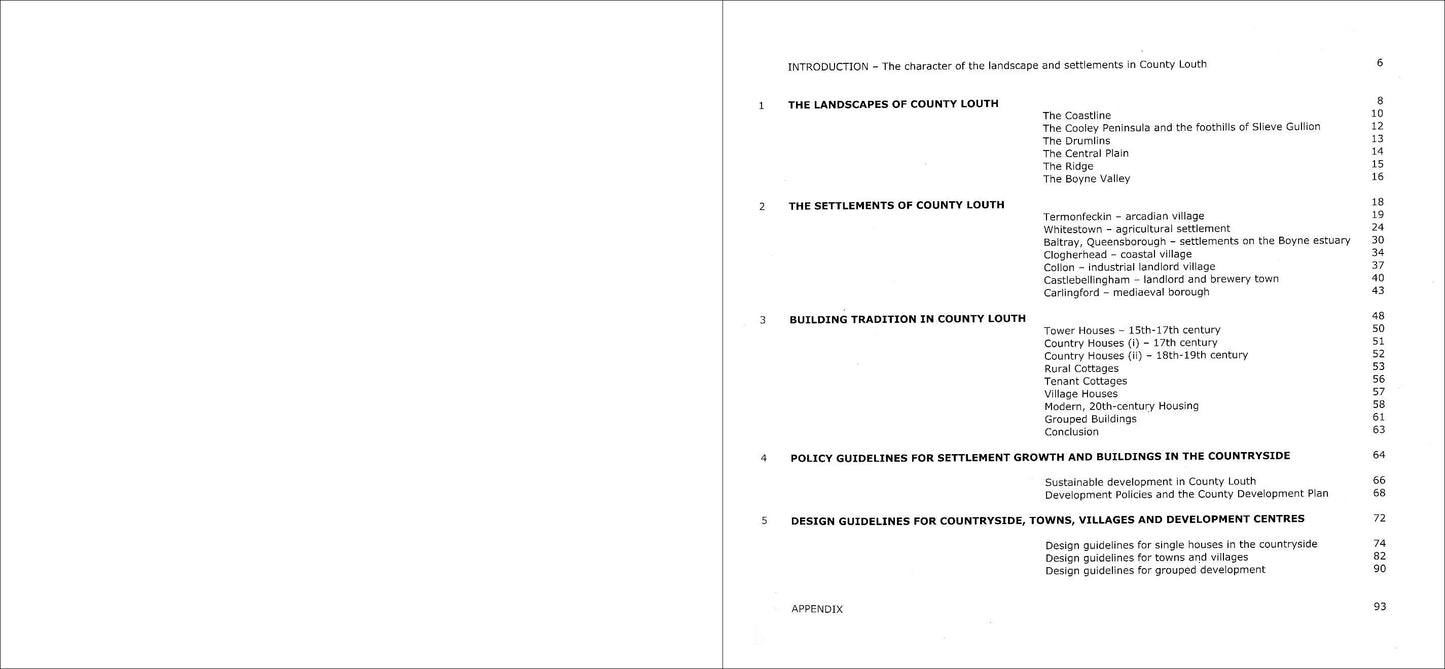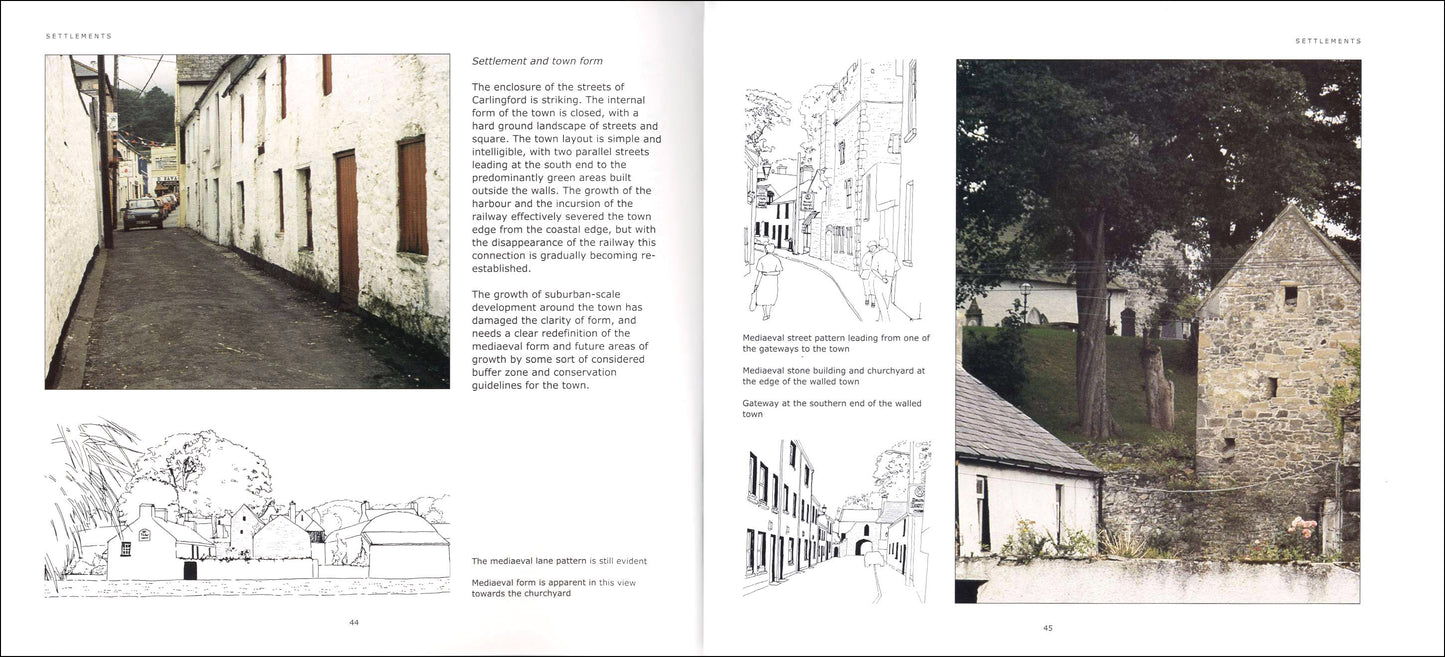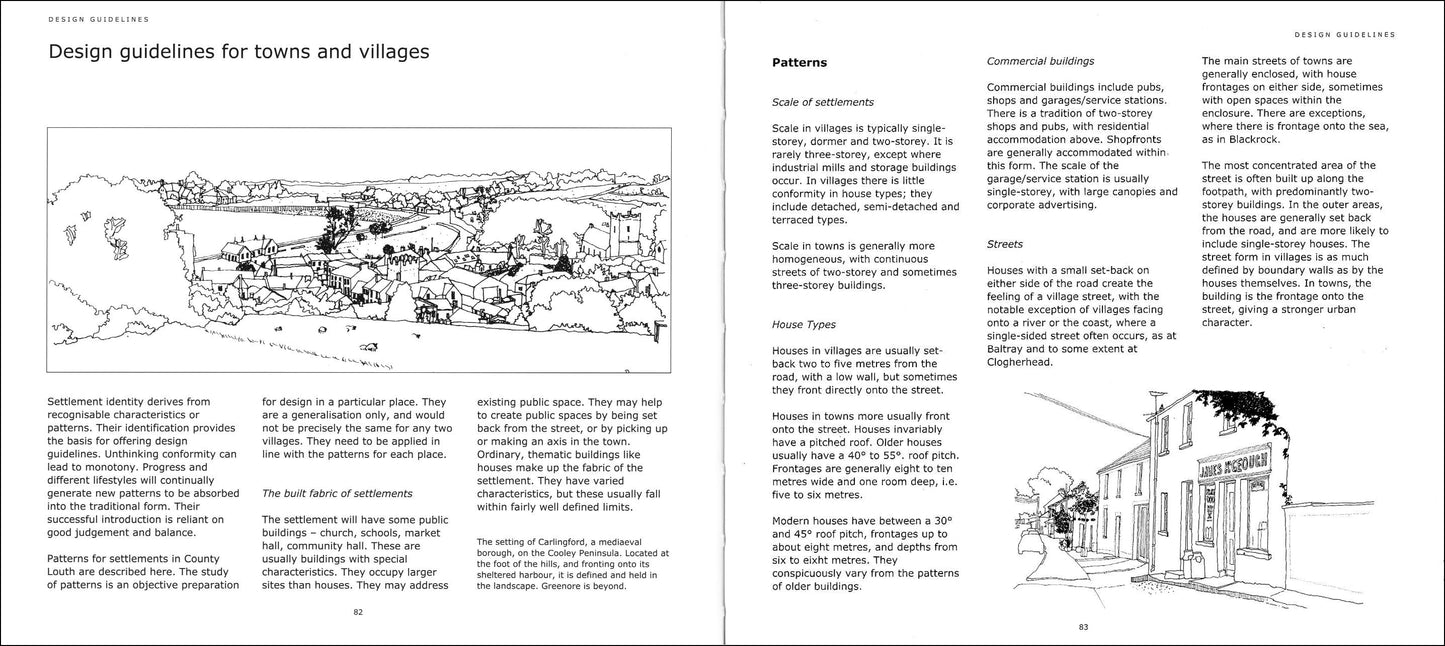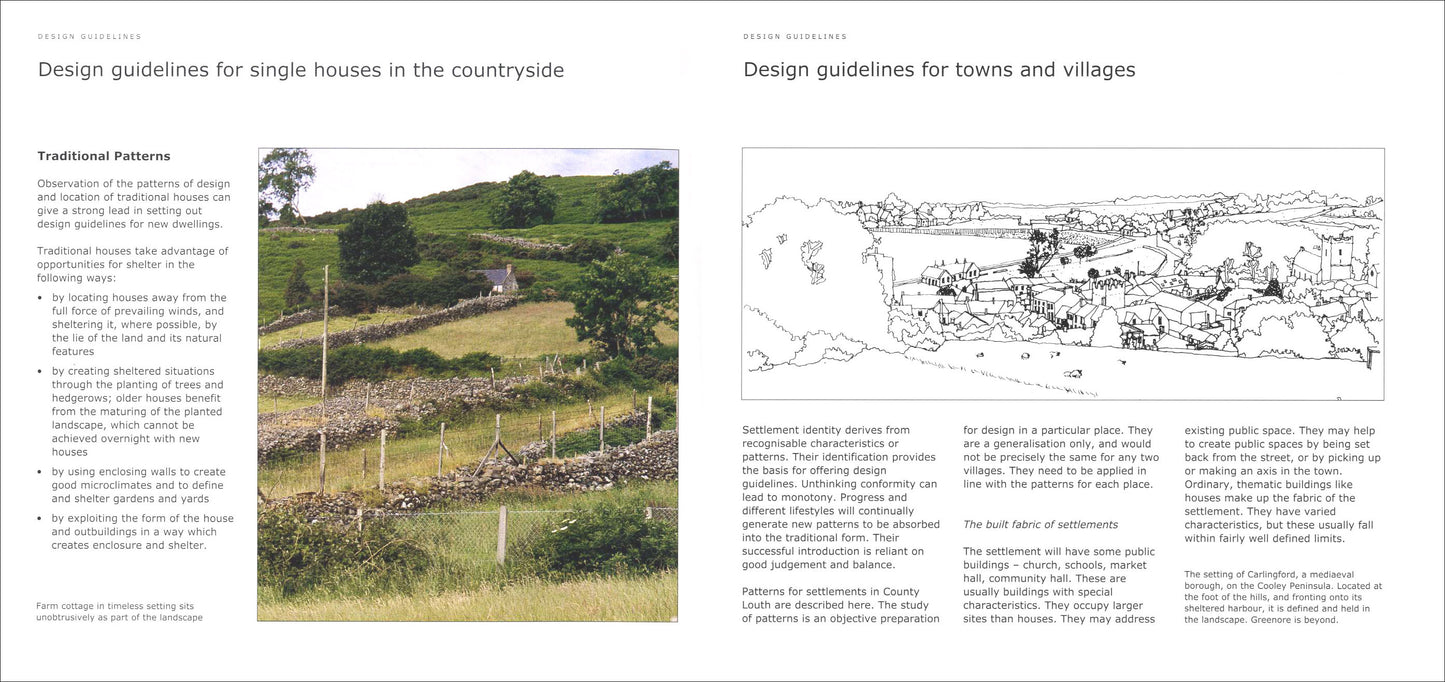Louth County Council
BUILDING SENSITIVELY & SUSTAINIBLY IN Co LOUTH — Landscape, Settlement, and Building Tradition
BUILDING SENSITIVELY & SUSTAINIBLY IN Co LOUTH — Landscape, Settlement, and Building Tradition
Couldn't load pickup availability
Share
by Philip & Delphine Geoghegan
ISBN 978 0946846 351 96 pages (paperback) 22.5x24.5cm 98 col illus + b/w drgs
The publication of this book by Louth County Council marked an important step in the promotion of positive, sustainable planning in the county. The book identifies the characteristics of landscape, settlement and building tradition which have combined to create the physical identity of the county. It is a book that is of great interest and value to all those who have regard for the unique quality of the environment in Co Louth. It provides practical and positive guidelines for developing in a sensitive and sustainable fashion to those who may be contemplating building in the county, or, indeed, anywhere in the Irish landscape.
I have been browsing through a handsome new publication ... It is immediately obvious that if [the authors] could wave a wand, the letters page of this newspaper would be robbed of a favourite topic. New houses in the countryside would simply cease to worry us, so shyly would they peep from their sheltering foliage, so sympathetic would be their forms and materials to local building traditions.
— Michael Viney, Irish Times
_____
EXTRACT
"Outside of the two principal towns, Drogheda and Dundalk, the landscape dominates and moulds the settlements of County Louth. There are inseparable links between settlement and landscape, and the towns and villages owe their position and raison d’etre to the nature of the countryside and coastline. The history of the living settlements in County Louth goes back to the Anglo-Norman invasion, but the original location of places can be traced to the much earlier, prehistoric and early Christian periods.
The creation of eleven mediaeval boroughs set the pattern for the urban structure of the county. Not all of the boroughs thrived, but Carlingford developed as a major town in the county. The Cromwellian period of the 1650s brought further changes to the settlements. Ardee, for example, became a plantation town, replacing its mediaeval role as a walled borough. Whitestown, an agricultural village with mediaeval origins, retained its unique layout of houses, which is intact today.
The nineteenth century was a period of change and growth in Irish towns, and many of the buildings which make up the streets of towns today are from this century. Towns and villages benefited also from the activities of landlords, who shaped and improved many settlements in County Louth. Termonfeckin, Castlebellingham and Collon have been chosen to illustrate this, whereas Clogherhead originated as a coastal village with a fishing harbour. By selecting a range of villages and towns, by relating them to the landscape in which they have grown, and by describing the patterns within the settlements, the future identity of growth can become clearer, ensuring that the quality of both landscape setting and settlement will be conserved. The consideration of individual buildings in the countryside demands also that their landscape context be appreciated and conserved. Landscapes have varying capacities to absorb development. The broad categorisation of the landscape of County Louth which follows will help in identifying an appropriate response.
— from the introduction by the authors
|
CONTENTS Introduction The character of the landscape and settlements in County Louth 6 1. The landscapes of County Louth 8The Coastline
The Cooley Peninsula and the foothills of Slieve Gullion
The Drumlins
The Central Plain
The Ridge
The Boyne Valley
2. The settlements of County Louth 18 Termonfeckin – arcadian village
Whitestown – agricultural settlement
Baltray, Queensborough – settlements on the Boyne estuary
Clogherhead – coastal village
Collon – industrial landlord village
Castlebellingham – landlord and brewery town
Carlingford – mediaeval borough
3. Building tradition in County Louth 48 Tower Houses – 15th-17th century
Country Houses (i) – 17th century
Country Houses (ii) – 18th-19th century
Rural Cottages
Tenant Cottages
Village Houses
Modern, 20th-century Housing
Grouped Buildings
Conclusion
4. Policy guidelines for settlement growth and buildings in the countryside 64 5. Design guidelines for countryside, towns, villages and development centres 72 Appendix 93 |
